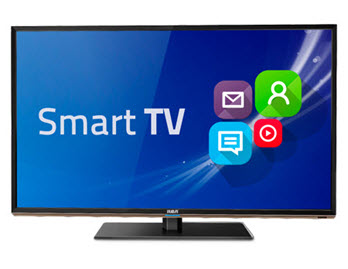Unlocking the Promise of Smart TVs

The rapid, technology-fueled evolution of the TV business has created opportunities and challenges for advertisers and programmers. None of those has more upside than tapping into the “smart” part of the smart TV.
It’ has taken a few years for the market to appreciate what it means to have a connected TV. The device that dominated the last 70 years of entertainment and advertising was suddenly blessed with new capabilities. The advent of smart TVs was potentially disruptive, and even threatening, to certain entrenched players, such as set-top box makers with a vested interest in dumb TVs; traditional service providers, who distributed the boxes as a revenue source; and the measurement industrial complex that profits from small panels and iffy set-top-box data.
These parties have resisted — and at times have actively hindered — the development of a vibrant smart TV ecosystem. That is, until the changing TV landscape starting showing the networks, agencies and programmers just how transformative these new data streams can be.
Data Drives Pace of Innovation
Now, internet-connected TVs (and streaming devices) are providing a more intuitive content experience and are helping audience-based buying and addressable advertising reach scale. All of those innovations depend on one thing: data. And unlike data from set-top boxes, panels or other sources, smart TVs measure all types of viewing, and as it happens — over-the-air, through a set-top box or via an over-the-top service. Smart TV data brings transparency to a clouded TV data market.
Related > Consumers Uncomfortable With Smart TV Data Collection: Survey
Earlier this year, in a case involving Vizio, the Federal Trade Commission for the first time clarified the required fair information practices for capturing and using information about the content playing on TVs.
As these and other data-market participants continue to digest and apply these new rules of the road, Vizio has led the industry in educating consumers about the collection and use of viewing history. We firmly believe that collecting and using this data — in nonidentified ways — means better, more relevant experiences on all of their entertainment devices for consumers.
Here are the main pillars of the new standards set by the FTC for all TV makers:
1. Smart TV makers must prominently disclose their viewing data collection, use and sharing practices — including how the data is augmented, such as with demographic or cross-device information or inferences, the types of companies to whom it is disclosed and the purposes of the disclosure (i.e., analytics, audience measurement and ad targeting).
2. The notification must be unavoidable and separate from any terms of service or privacy policy.
3. Smart TV makers must get express permission from TV owners before collecting, using or sharing television-viewing information.
Only if the entire industry comes into better compliance with these new (government-mandated) standards for collecting and using viewing history will the promise of smart TVs to deliver better entertainment and a more precise and efficient programming and advertising marketplace be fulfilled.
Unfortunately, not all companies appear to us to be equally committed to meeting the new legal standards, even though those standards are now clear. Our testing indicates that many companies are still hiding behind opaque, muddying disclosures, rather than leveling with consumers in plain, easy-to-follow disclosures as the FTC has required.
The FTC’s requirements for prominent notice of actual practices and explicit consent have been plainly stated for many months now. Any past legal uncertainty has long been cleared up. There is no excuse in today’s market for not being compliant in these basic respects.
If a TV maker can’t execute a firmware update or other mechanism to meet its clear obligations, then it’s hard to see why the right answer is to persist with tracking practices the FTC has deemed unfair.
Metrics Cleanup Will Take Time
Because compliance is not 100% across the industry and many actors are using back-door tactics to gain consumer consent (such as TV ad tech posing as something else), cleaning up the market is not a fast or easy endeavor. Many companies, brands and agencies are therefore seemingly reliant on squishy metrics. Agencies buy and resell these metrics on a campaign basis and perhaps don’t realize the potential breaches of privacy, the general lack of standards or the associated risks.
This doesn’t have to be the case. Those companies have to change their models to be more transparent, from the opt-in until the data is delivered. At Inscape, we can’t hide or obscure anything; when our partners receive their data, a daily device count is one of the key metrics. But we know that is not the case for everyone.
There is simply no easy third-party way to track which clients are or are not detecting content. And therein lies the challenge. It’s like counting impressions based on the number of people who have the internet instead of those that actually saw the ad on a screen.
As an industry, we can and must do better.
When flawed data — information poorly gathered and misrepresented — is peddled, the resulting smoke and mirrors harms media buyers and could lead to more regulatory sanctions and complaints from wary viewers and brands. We’re all fortunate to have businesses based on television, a wonderfully sophisticated device whose potential is just beginning to be tapped, 80 years after it first entered the living room. The industry needs to work together to ensure that the smart TV environment remains secure and to build a higher-functioning source of consistent and actionable viewership data.
Jodie McAfee is senior vice president of sales and marketing atInscape.tv.
Multichannel Newsletter
The smarter way to stay on top of the multichannel video marketplace. Sign up below.



